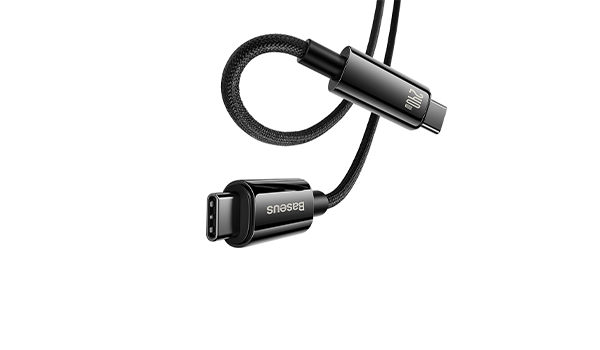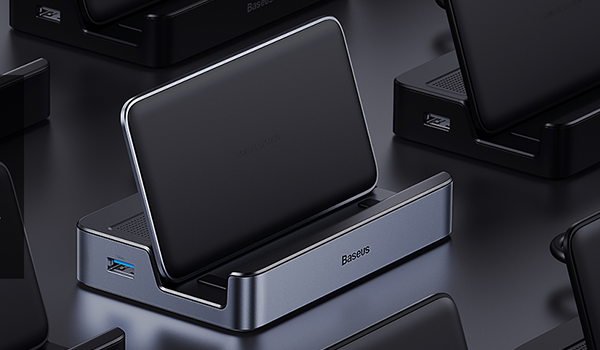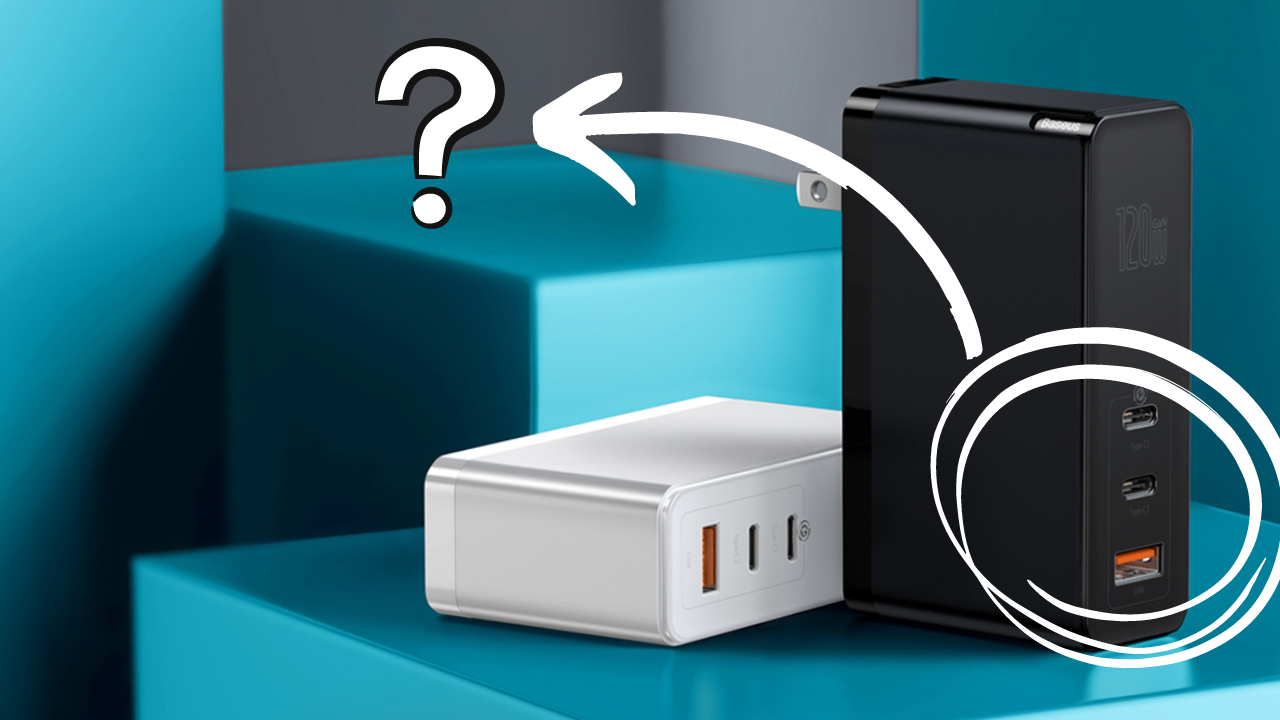From replaceable batteries to lithium-ion, battery technology has advanced at an explosive pace. Just 10 years ago, you would have to leave your phone on the charger for a couple of hours. But these days, you can get a phone that will charge from zero to full in just 10 minutes.
More important than the batteries, though, is the technology used to charge them. Fast charging simply would not be possible without the USB-C standard. In particular, USB-C power delivery is one of the mainstream technologies behind these high rates of energy and data transfer.
What is PD charging, and how is it different from the competition? Let's dive in. Read on for your ultimate guide to Power Delivery 3.0, how it works, and why you should get on board.
USB Charging Options: Then and Now
Before we discuss PD fast charging, it's important to understand the groundwork that got us to this point. Depending on how old you are, you may not remember the time before cable standardization.
In the olden days, as it were, every device had a proprietary cable. Nokia, as one example among other early phone brands, had its own proprietary cable--i.e., a Nokia cable that didn't work with other brands.
This was the case for every brand. Motorola, as much as Blackberry, all came with their own cables. If you needed to top up at a friend's house, you hoped and prayed they had your particular cable.
This was utter chaos, and eventually, the government stepped in. The EU mandated common charging cables. No longer could phone manufacturers make a proprietary cable and then strong-arm their customers into buying it.
That said, it wasn't all sunshine and roses. One of the largest USB standards for many years was the micro USB. It was problematic, to say the least.
The Problem with Micro USB

Where do we begin? The problems with micro USBs were never-ending.
For starters, it was an incredibly flimsy cable that was easy to break. This was made worse by the fact that it wasn't reversible, an issue that Apple tried to fix with their Lightning cable. You had to insert it in the proper one-way orientation, like USB-A.
This led to a bevy of user issues. Either the cable would break, get jammed inside, or ruin the entry port. Many a device became unusable after a bad insertion.
Further, micro USB was not future-proof. It had very slow charging speeds. Newer, more capable phones were stuck with 9W charging.
Last of all, micro USB had pathetic data transfer speeds--at least compared to the ones these days. In every way possible, micro USB was a forgettable blot on tech history. Thankfully, USB-C came to save the day.
How USB-C Saved the Day

USB-C is, at least for now, an incredibly versatile and powerful connector option. It solves all the issues with micro USB--and some with the proprietary Apple Lightning cable, too.
Charging options are better with USB-C. With it, we get the blistering fast charging speeds that we alluded to in the intro. And thanks to European standardization, USB-C will now be the baseline for all electronics.
More importantly, USB-C can do double duty. It can charge at those jaw-dropping outputs while also transferring data.
There has been some confusion in recent years with differing standards. But theoretically, USB-C can attain 40 Gb per second of data transfer.
That's not all, though. USB-C is also able to transmit video streams, i.e., from a computer to a monitor. Assuming you have the proper HDMI-to-USB-C connector, you can connect a phone or computer to your monitors.
Thankfully, the adoption of USB-C is going strong. You'd be hard-pressed to find a device these days that still clings to the micro USB standard. That includes Apple, which notoriously fought tooth and nail to keep its Lightning cable--and ultimately lost.
With all of that said, we now have the context necessary to explain that you all came here for USB-C Power Delivery.
What Is Power Delivery?
Simply put, Power Delivery (or PD) is the USB Implementers Forum's universal standardization of fast charging over USB-C. It is the effort of the forum to create a standard that can be used on all devices, not just specific ones.
USB-C's intention was to do away with proprietary nonsense. Many companies created their own USB-C tech. Examples include Samsung Super Fast Charge, QUALCOMM Quick Charge, Huawei SuperCharge, and Oppo VOOC.
As you would expect, these standards only work with their respective brands. Samsung's fast charge only works with Samsung products. A Samsung charger won't give the same benefit to an Oppo device.
To make fast charging accessible to all, Power Delivery was born. Let's get to the PD charger meaning.
What Is PD Charging?
PD fast charging is pretty straightforward. Over a USB-C power delivery, you can charge up to 240W. For reference, most phones charge at rates significantly lower than 100W.
What does this mean for the average consumer? That USB-C has the oomph to power almost any electronics, even heavy-duty ones. More than that, PD charging can handle the energy needs of multiple devices at once--such as this charger.
Don't be alarmed, though. Even if you have a device that supports PD charging, you won't be overloading the lithium-ion battery. Devices these days are smart enough to self-regulate. A device will only charge at its maximum rated charging rate.
It's great because now, you can mix and match your chargers for different devices. For example, you could have a charging brick that powers your phone and your laptop.
What Is a PD Charger?
A proper PD charger is any modern charger that supports one of the PD charging protocols. Because this is a universal standard, there is no proprietary licensing.
You do not need to get permission from Apple or Samsung to use their particular quick charging standard. Instead, you can simply support Power Delivery, which most devices support. As an example, here is a list of chargers you can buy.
One of the main benefits of PD charging options is that it enables fast charging with portable power bank batteries. Now, your portable battery can quick-charge your device while you are on the road or on a plane. A plug-in is no longer necessary to get those crazy fast speeds.
PD Charging Options
While you are in the market for USB-C power delivery, be aware that there are multiple versions. Like USB-C, there have been continually improving iterations throughout the years.
Power Delivery 1.0
This is the earliest iteration of power delivery, with a max of 100 W charging. That said, there's a big asterisk to that claim. It only supports that charge level for workstations and other high-energy usage products, not phones.
Granted, 1.0 was very rough. It had several power profiles rather than automatic switching, as you might see in any recent PD versions.
Fortunately, you won't accidentally purchase this option. Like USB 1.0, it has been phased out. You'd only find it if you were digging through an old box of electronics.
Power Delivery 2.0
The only major difference between 2.0 and 1.0 is that there are now dynamic profiles. You don't need to purchase a specific cable for a specific use case.
Power Delivery 3.0
The big improvement that 3.0 added to 2.0 was better information exchange. Now, the cable can communicate more detailed and useful information with the connected device.
So not only was charging fast, it was safe. 3.0 allowed for devices to avoid overcharges or avoid charging altogether if the battery had failed.
Power Delivery 3.1/3.2
What is PD 3.0? This is where things get fun.
3.1 and 3.2 brought the big guns to the table. Notably, the ability to charge up to 240 W. This is an explosive upgrade, more than double the previous 100 W of PD 2.0.
Granted, most of your devices likely won't support the charging level. But some recent phones do allow you to charge a 240 W and go from zero to full in record time. 3.2 is relatively new, so some chargers give you 3.1 and 3.2 options in the same package.
Benefits of USB-C Power Delivery
We have discussed at length the history behind USB-C and how Power Delivery came to be. But how does this translate into a worthwhile product for the user? Let's discuss some of the benefits of using Power Delivery in comparison with competing fast charge standards.
Standardization Is Easier and Cheaper for Everyone
Everyone realizes that having one cable that does everything is the best. And yet, year after year, companies continue to build standards that only work for their products. When the average consumer has products from multiple companies, this can only create headaches.
For example, suppose you have a Samsung phone. You decide to purchase Samsung's fast wireless charger to get the best charging speeds.
Now imagine you have a spouse or friend with a non-Samsung phone. They can use the charger, but they won't get the benefit of higher charging speeds. If you replace your Samsung phone with Huawei, you lose those fast charging speeds as well.
Your only option then would be to purchase a new fast charger and discard the old one. That costs you a lot of money and robs you of convenience. This is why PD fast charging is best; it works across brands.
And this leads to another problem.
Proprietary Products Create More E-Waste
E-waste is a colossal, worldwide problem. Every year, people discard thousands upon thousands of tons of electronics.
These electronics require complicated machines or people to break them down into their constituent parts. Some of their contents are toxic, which poison humans and their ecosystems.
To add insult to injury, many of the components of these electronics are rare earth metals. So companies are wasting finite resources to build extra proprietary chargers rather than building fewer that everyone can use.
You can see where we're going with this. With one charger to rule them all, you cut down on e-waste. So it's not just good for our wallets; it's good for the environment.
Two-Way Charging
In previous generations, you often needed multiple cables for different charging scenarios. For your typical charge, you'd need a USB-A to Micro USB cable. This is because you could only charge in one direction from A to Micro, but never the reverse.
This created situations where you might not have a cable on hand to reverse the charging. Or you accidentally plugged in a cable thinking you were charging, but you were really sending power the wrong way.
USB-C is not only reversible, the power can go both ways. So if you have a power bank with USB-C and a laptop with USB-C, you can charge in both directions.
If your laptop is connected to power, you can charge the power bank. But if you are at the airport, your power bank can charge your laptop. In both situations, you need only one cable, and you don't need to worry about which side you plug in first.
Power Delivery Is More Adaptable
As we mentioned, previous versions of fast charging required having the right cable. Otherwise, your device would step down, charging to the next level.
For example, if your device couldn't support 100 W, it would step down to 45W. But if you had a device that charged at, say, 58 W, you were stuck at 45 W.
USB-C PD charging is smarter and more versatile. You never have to worry about using the correct brick or cable. The standard allows your device to get an optimal charge no matter which device you plug in.
Find PD Charging Options at Baseus
Power Delivery is the USB fast-charge standard for power-over-USB applications. It allows all devices, regardless of manufacturer, to charge at up to 240 W. It makes full use of the modern USB-C standard, cuts down on e-waste, and expands your capabilities for device power.
Baseus is the leader in all things batteries and desktop docks. Get started by looking at our best-seller section for some excellent deals.
 United States/English
United States/English






